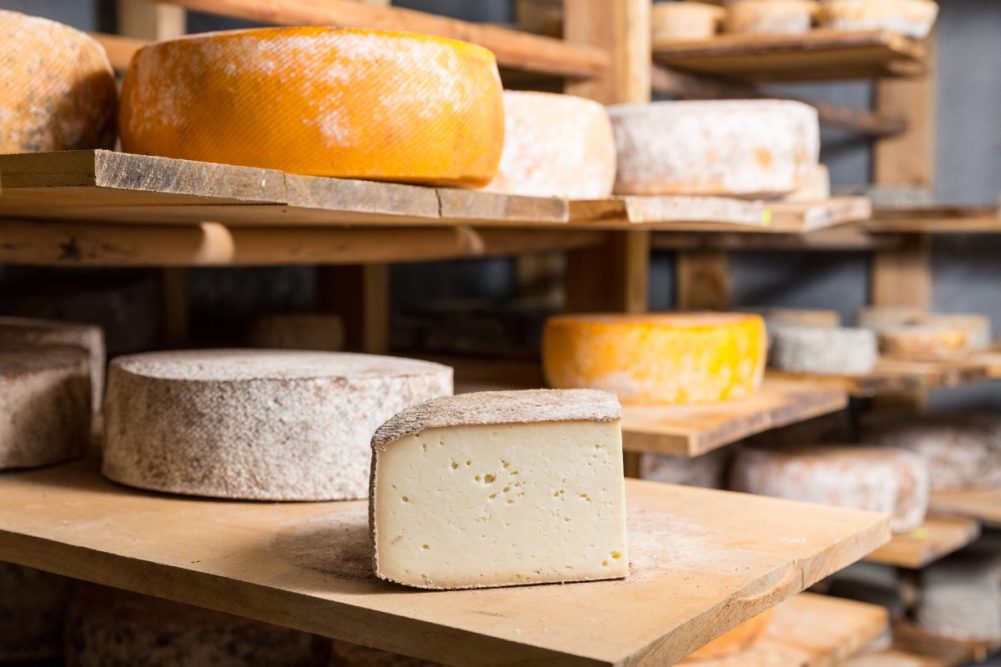The US cheese market is the most bearish dairy market we have, but it also has the most upside risk for prices. It’s a strange line to be walking.
While high feed and other input costs have hit dairy farmers hard, resulting in the largest year-over-year drop in milk production in 18 years, cheese production is still growing. The tighter milk supply has hit butter and nonfat dry milk (NFDM) production hard with those prices up 89% and 67% from last year, respectively. With the cheese supply still growing, the CME block Cheddar price was only up 22% from last year in February.
The relatively strong cheese production has been driven by a couple of factors. Most of the cheese processing capacity is owned by commercial processors, not dairy co-operatives. The co-operatives collect the milk from farmers, then sell what they can to commercial plants and run the remaining milk through their own plants. Co-operatives and commercial plants often have agreements about how much milk will be delivered each day or week, which means that, even if milk production falls, the amount of milk showing up at the cheese plants is relatively stable.
The reason commercial cheese makers want to contract for steady deliveries is efficiency. It is expensive to build a cheese plant, and the plant makes no money if milk isn’t being run through it, so there is a drive to keep profit-maximizing plants running as close to capacity as possible. The value of milk going into butter/NFDM is now well above the value of milk going into cheese, which creates an incentive for cooperatives to try and pull milk away from cheese when and where possible and put it into butter/NFDM. So far it doesn’t look like a lot of milk has been shifted away from cheese, but it remains an upside risk for cheese prices moving forward.
There are two other big upside risks for the cheese market. The first is the very strong cheese prices in Europe and Oceania (New Zealand/Australia). In early March, fresh Cheddar in Europe was priced around $2.55 per pound while Oceania Cheddar shot up to $2.90 at the Global Dairy Trade Auction, yet fresh Cheddar on the CME spot market was still priced around $2.00. Milk production has turned out weaker than expected across all the major dairy exporters, either due to input costs like feed, energy and labor, or due to weather problems. That has pushed the prices of dairy products higher globally.
US cheese prices have been reluctant to follow the world market higher as US cheese production has continued to grow and logistics problems have made US cheese a little less attractive to importers. But the price spread between the US and the world market is getting historically wide and bargain hunting buyers who can handle the shipping delays are going to be sourcing from the United States, which will help tighten up US supplies and likely push CME cheese prices higher.
The second big upside risk is feed costs. Hot and dry weather in parts of South America, and now the war in Ukraine, are tightening the global grain/oilseeds outlook. There is still extreme uncertainty around what will happen with supply coming out of Ukraine and Russia, but it is hard to see grain movement returning to “normal” anytime soon. Wheat prices in Europe have already hit new record highs and we have the potential to push US feed prices to new record highs as well. That would keep US milk production weak, and with butter/NFDM stocks already tight, milk would eventually need to come out of cheese which would push cheese prices higher.
While US cheese prices have been trending higher, the increases have been mild compared to other dairy products, cheese prices on the world market, and mild compared to recent increases in feed costs. It’s possible a bearish development like a recession or sharp shift in demand could push cheese prices lower, but there are a lot of factors that would argue for higher US cheese prices moving forward.
– Nate Donnay is the director of Dairy Market Insight at StoneX and has been applying his interest in large complicated systems and statistical analysis to the international and US dairy markets since 2005.
[Editor’s note: This material should be construed as market commentary, merely observing economic, political and/or market conditions, and not intended to refer to any particular trading strategy, promotional element or quality of service provided by the FCM Division of StoneX Financial Inc. (“SFI”) or StoneX Markets LLC (“SXM”).]

